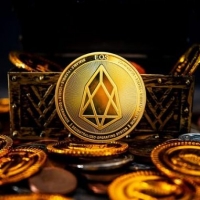EOS has attained celebrity-like status in the cryptocurrency market - on the back of a very successful ICO, and because it’s seen a healthy rise in its price ever since news of its mainnet hit the markets.
EOS: The Basics
EOS is a decentralized operating system based on blockchain technology. It is designed to support of decentralized applications on a commercial-scale by giving all the required core functionalities. These enable businesses to build the blockchain applications in a manner that stays similar to that of web-based applications.
This blockchain network has also claimed to remove transaction fees and conduct millions of transactions within a second.
- The token name is EOS.
- It has a few major notable tech designs, such as DPoS consensus, 100,000+ TPS, zero transactional fees, ability to alter codes, etc.
EOS Development
- At BlockShow Asia, on November 29, 2017, Block.one revealed a publicly available testing environment, known as EOSIO Single-Threaded Application Testnet (EOS STAT).
- The entire plan of EOS was published in 2017 in a whitepaper.
- The EOSIO platform was developed by a private company, Block.one and was further released as an open-source software on June 1, 2018.
- To ensure that the native tokens were distributed widely at the launch of the blockchain, around a billion tokens were sold on the Ethereum platform by Block.one. This provided a distribution network that everyone who owns the token can start using it once the EOS blockchain software is released.
10% of these tokens are reserved for Block.one. Total of 20% EOS tokens was sold on Ethereum in the first 5 days of the entire 341 days long token sale. The remaining 70% tokens, that stand under the majority, are to be sold and produced at market value.
The startup, EOS ICO, managed to get $170 million in the first step, regardless of critics from numerous representatives on the blockchain community.
EOS is presently the fifth leading cryptocurrency of the world by market capitalization.

